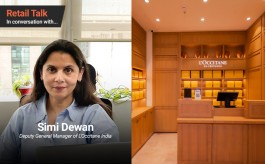Arvind Singhal: The'e' challenge to physical retail
By Payal Gulati | March 07, 2014
Five reasons mall and brand owners should co-opt'e-tailers' rather than oppose them
 Several fascinating changes are underway in India that will fundamentally
transform how Indians will shop just a few years ahead, and thereby
irreversibly alter the composition of various formats of retail businesses,
especially those catering to the needs of urban, semi-urban, and even the
relatively large (say, the top 50,000 of the estimated 650,000) villages. This
change will create, in the near term, a rapidly escalating conflict between
physical retailers (and mall owners having physical retailers as tenants or
revenue-sharing partners) and the e-tailers. There are already many visible examples of this
conflict with reports of threats from mall owners to brand owners to ensure "price" parity between the
physical and online retail channels. However, such threats (or hopes) on behalf
of physical retailers, select brands, and mall owners and shopping
establishments' landlords are unlikely to work (notwithstanding even the
questionable legality of such action from the point of view of competition
laws) since the tide is clearly in favour of e-commerce (of both services and merchandise).
Several fascinating changes are underway in India that will fundamentally
transform how Indians will shop just a few years ahead, and thereby
irreversibly alter the composition of various formats of retail businesses,
especially those catering to the needs of urban, semi-urban, and even the
relatively large (say, the top 50,000 of the estimated 650,000) villages. This
change will create, in the near term, a rapidly escalating conflict between
physical retailers (and mall owners having physical retailers as tenants or
revenue-sharing partners) and the e-tailers. There are already many visible examples of this
conflict with reports of threats from mall owners to brand owners to ensure "price" parity between the
physical and online retail channels. However, such threats (or hopes) on behalf
of physical retailers, select brands, and mall owners and shopping
establishments' landlords are unlikely to work (notwithstanding even the
questionable legality of such action from the point of view of competition
laws) since the tide is clearly in favour of e-commerce (of both services and merchandise).
Underpinning this transformation are five major factors. The first, and perhaps
the most important, is the increasing time-poverty of the core consuming class
in urban India. The very rich are able to
"outsource" many of their mundane, time-intensive activities to a
retinue of assistants leaving them with more time for leisure, recreation, and
shopping (the very poor may have the time but no disposable, discretionary
spending income). But the middle class faces more pressures on its time as it
juggles jobs, longer commutes, attending to the myriad needs of children,
social obligations, higher cost and shrinking availability of trained domestic
help, the nuclearisation of families and so on. Indeed, if time could be
bought, it would command a rapidly growing premium from the typical
middle-class urban Indian household.
The second factor is the impact of sustained double-digit consumer price inflation across India. From the barely comfortable five to
six per cent range of yesteryear, the average Indian consumer has endured
several successive years of double-digit inflation. With the economy slipping
to a very low growth trajectory, most Indian consumers (other than the uber
rich) have seen nearly stagnant or even declining inflation-adjusted incomes.
As a result, a growing number of consumers have started to trade-down and look
for cheaper options.
The third factor is the fact the 15-34 age group now comprises the largest
demographic grouping in India, numbering about 435 million. The next big age
group is the 1-14 comprising about 345 million. The age group 35-59 now
accounts for just about 27 per cent (about 325 million) of India's population.
It is no surprise that the majority of Indian consumers today have many new
needs and aspirations. On account of digital media, there is also an increasing
convergence across geographies and socio-economic strata when it comes to these
new needs and aspirations.
The fourth factor is the exponential increase in internet connectivity across
urban and rural India. From about 150 million unique internet users at the
beginning of 2014, India would probably see this number grow to over 300
million by 2016 (with bulk of the growth coming through rising penetration of
smart phones). While the quality and speed of connectivity remains patchy
today, it is likely to improve rapidly with the anticipated aggressive roll-out
of 4G networks.
The fifth is the emergence of an exceptionally vibrant ecosystem of e-commerce
entrepreneurs who are relatively young, more ambitious, tech savvy and risk
loving. They are able to adapt their business models almost on a monthly basis
as they get a better handle on consumers' needs and the challenges of running
e-tailing business in India. Unlike the corporatised "brick and
mortar" retail where international giants are still struggling to make their
presence felt, the e-tail universe in India already has two of the world's
biggest and most successful retailers present in India (eBay and Amazon) and
making an impact. There is seemingly also no dearth of capital for the more
promising e-businesses.
On the other hand, corporatised physical retail has not really lived up to the
early promise and potential. The last 20 years have seen entry of some of the
most formidable businesses and entrepreneurs in the retail sector. Sadly, for
various reasons, most have struggled and continue to struggle to find the right
business model, format, and management capable of delivering both growth and
profitability while also creating customer delight. At this time, physical
retail faces even more headwinds that include inadequate availability of
appropriate quality and right-priced real estate, rising operating costs that
include salaries and utilities, and almost no access to global capital, thanks
to the highly convoluted and impractical policy for foreign direct investment in
multi-brand retail.
With all these challenges for the brick and mortar retailers, and in the
backdrop of the fundamental changes in Indian consumer behaviour, "e"
is likely to emerge as the most attractive retail channel for a large segment
of the urban Indian consumer and offer the maximum competition to corporatised
physical-format retailers, especially those in high streets and shopping malls.
Indeed, by 2023, our estimates suggest that e-commerce will be the dominant
"organised" retail channel in the top 75 Indian cities (cities with
population of one million or more). It will account for as much as 30 to 35 per
cent of total merchandise sale by value in these cities and about 20 per cent
of total merchandise sales in the rest of urban India. Traditional, small,
independent retail outlets will continue to account for a significant 35 to 40
per cent of total merchandise sales in the top 75 cities and closer to 50 to 55
per cent in urban India overall. The share of organised "brick and
mortar" channel sales will be limited to between 25 to 35 per cent in the
top 75 cities and between 20 to 25 per cent for all of urban India.
So, the earlier the mall owners/retail landlords (and some brand owners too)
accept the reality of "e-tail" and take steps to adapt to these
fundamental shifts, the better it would be for them. Indeed, there are many
possibilities for such mall owners and landlords to rejig their spaces and
business model to co-opt "e-tailers" as their partners rather than
see them as adversaries. Likewise, brands should not focus too much on
preserving their "price integrity" across various shopping channels
but instead, collaborate with their channel partners (physical retailers and
e-tailers) to find ways of stimulating consumer demand and grow their businesses
faster.
Business Standard









Comments